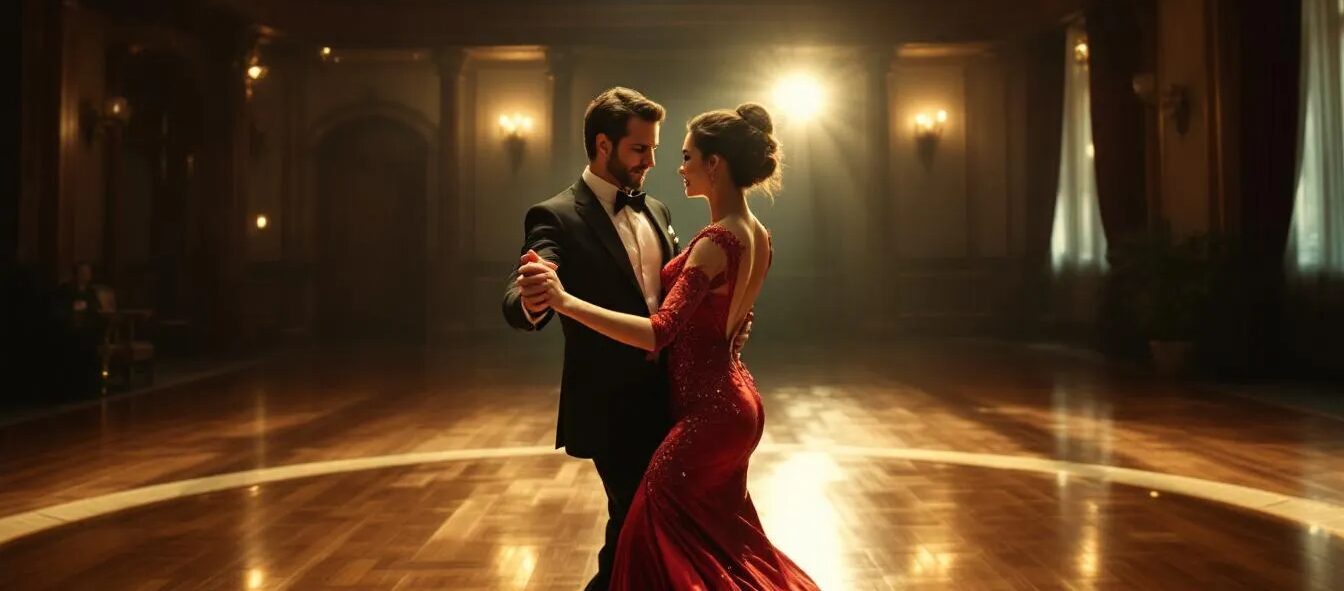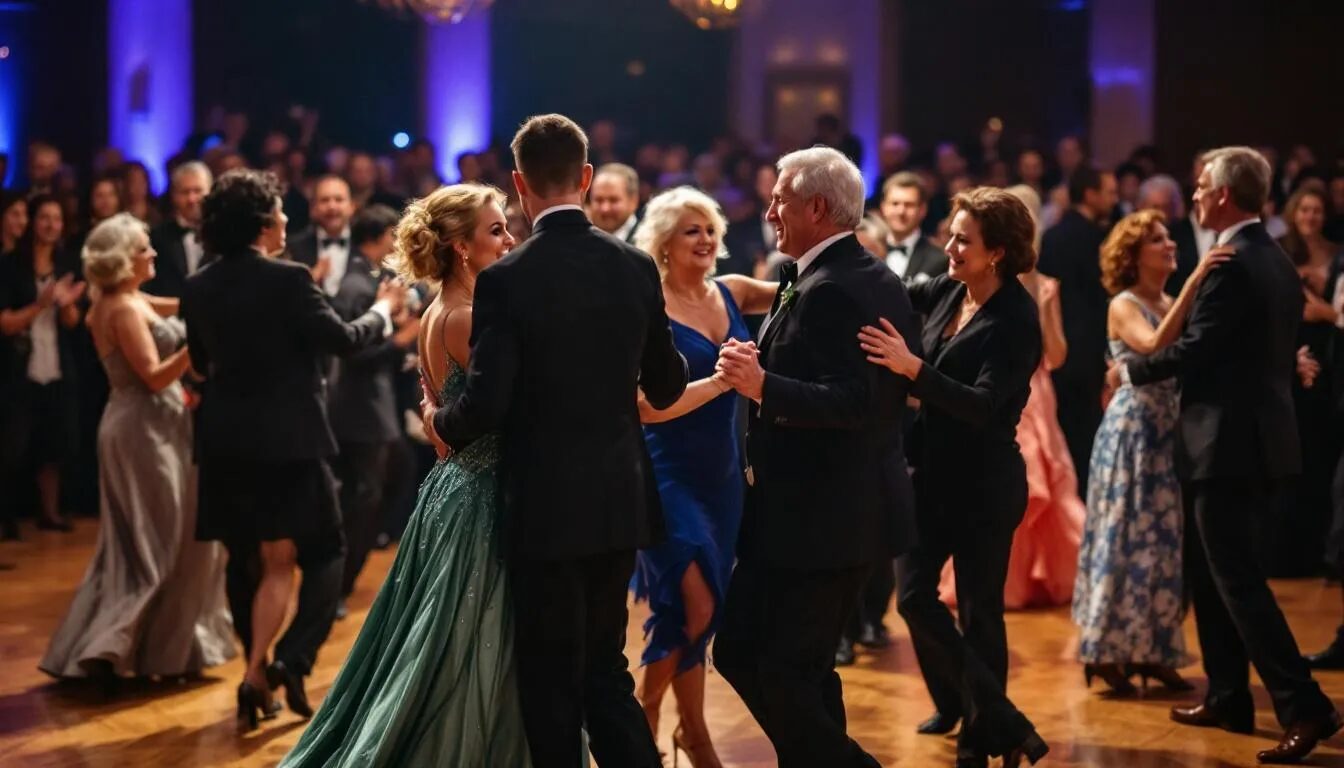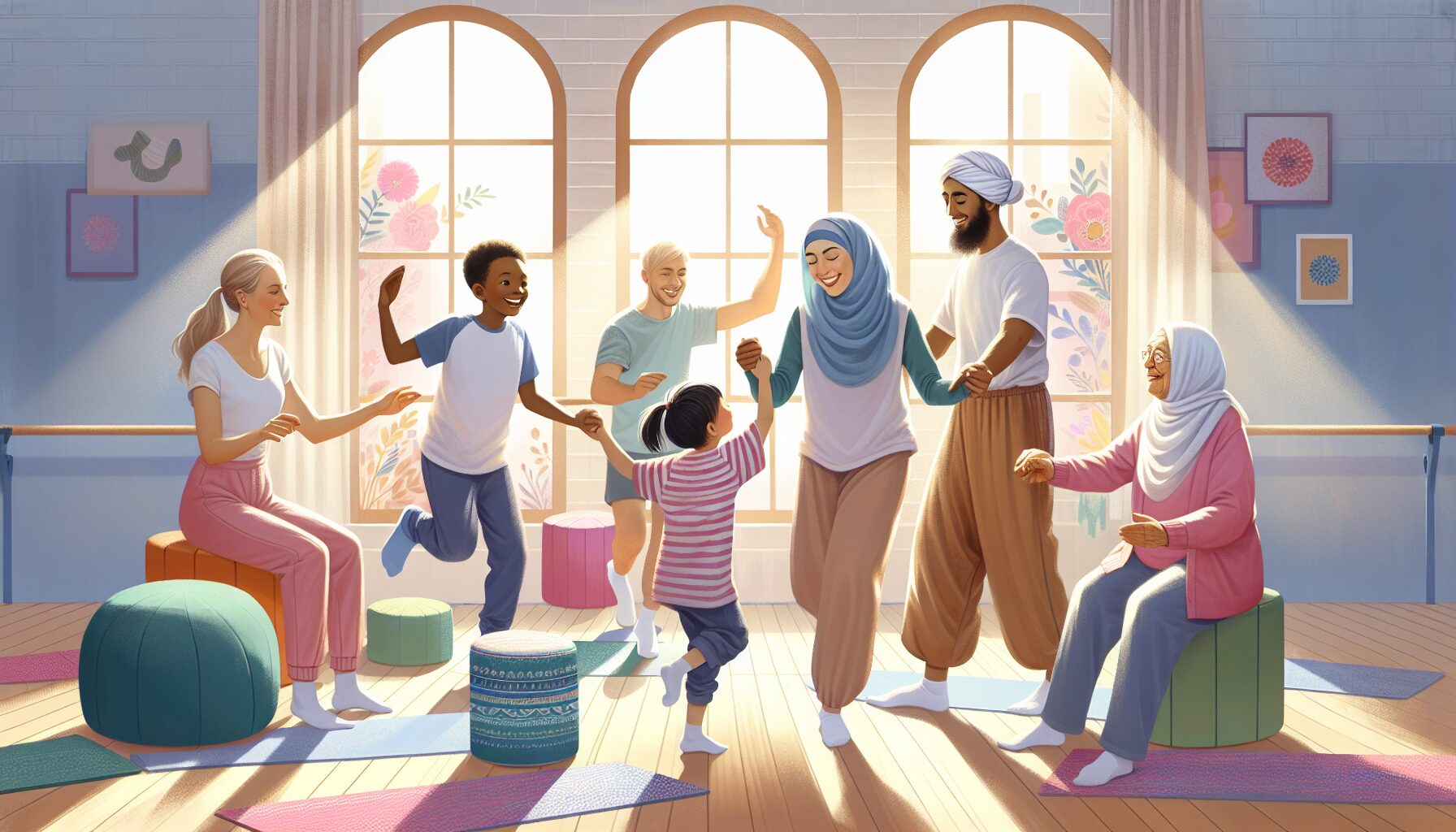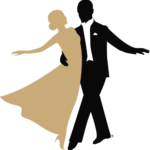Why Dancing is Important: Uncovering Its Joyful Benefits for All Ages
Dancing is important due to the positive impact it has on your physical and mental well-being, including social connections. Discover the many key benefits that dancing has for the mind and body.
Key Takeaways - Dance Classes for a Better Life
- Dancing boosts mood and confidence by stimulating emotional responses and enhancing self-expression.
- It offers extensive physical health benefits, improving cardiovascular fitness, muscle tone, and balance for individuals of all ages.
- Dancing fosters social connections, enhances mental health, and serves as a powerful tool for cultural expression and rehabilitation.
The Joy of Movement

There’s something magical about how dancing synchronizes music and movement, evoking feelings of pure happiness. When you dance, your body responds to the rhythm, and this physical activity stimulates both emotional and physical responses, creating a sense of joy that is hard to replicate in other forms of exercise.
Scientific research supports what dancers have known all along: dancing can significantly boost your mood. By engaging in dance, you increase levels of serotonin, the “feel-good” hormone, which contributes to an improved overall mood. Imagine the euphoria of moving freely to your favorite tunes, feeling your spirits lift with each step.
Dancing also offers a safe space for self-expression, allowing you to connect with your emotions in a unique way. Whether you’re performing a choreographed routine or improvising on the spot, dancing helps you articulate feelings that words often can’t capture. This connection between movement and emotion not only enhances personal satisfaction but also fosters a deeper understanding of oneself.
Moreover, the physical confidence gained through dancing and choreography is transformative. As you master new steps and improve your technique, you build a physical confidence that translates into a boosted mood and a more positive outlook on life. The dance floor is a space to let go of inhibitions and fully embrace the joy of movement.
Ultimately, the joy of movement goes beyond the physical act of dancing; it encompasses the emotional and psychological benefits derived from immersing in rhythm and music. Such joy serves as a strong motivator to continue dancing and exploring new styles, each presenting its unique benefits.
Physical Health Benefits of Dancing
Dancing is a fantastic way to improve your physical health, offering numerous benefits that go beyond just staying fit or improving balance. One of the most significant advantages is its positive effect on cardiovascular health. Regular dance sessions strengthen the heart and improve overall cardiovascular efficiency, reducing the risk of cardiovascular diseases.
In addition to strengthening the heart, dancing can help prevent high blood pressure and other cardiovascular-related issues. The World Health Organization emphasizes the importance of regular physical activity, and dancing is a fun and engaging way to meet those recommendations.
Another physical benefit of dancing is enhanced muscle tone and strength. The varied movements involved in different dance styles work various muscle groups, contributing to improved endurance and muscular strength. For children and teens, engaging in dance can lead to significant improvements in cardiovascular capacity, strength, and flexibility, setting a foundation for a healthy lifestyle.
Dancing is also an inclusive form of exercise that caters to individuals of all ages, body types, and fitness levels. Whether you’re a seasoned dancer or a beginner, dance offers a welcoming environment to improve your physical health. Moreover, dancing will improve balance by strengthening core muscles, which is particularly beneficial in reducing the risk of fall-related injuries.
In summary, dance offers extensive and inclusive physical benefits, making it a valuable activity for health enhancement. From improved cardiovascular fitness to better balance and muscle strength, dancing is a great way to achieve overall physical well-being.
Mental Health and Emotional Well-Being
Beyond the physical benefits, dancing has profound effects on mental health and emotional well-being. Notably, dancing has a significant impact on reducing stress. Dancing can lower cortisol levels, which helps alleviate stress and anxiety. Although both dance and yoga have been noted to help reduce negative emotions, dancing also increases positive emotions. The combination of music and movement creates a therapeutic experience that promotes relaxation and mental peace.
Additionally, dancing can lead to better sleep. The endorphins released during dance relax the body and mind, making it easier to fall asleep and enjoy a restful night. This improved sleep quality further contributes to overall well-being, helping you wake up refreshed and ready to face the day.
Dancing also offers an outlet for self-expression, allowing individuals to process and release their emotions. This emotional expression can be particularly beneficial for those experiencing feelings of depression or anxiety. Engaging in dance provides a safe space to explore and communicate emotions, fostering a sense of emotional clarity and relief.
For older adults, participating in dance classes has been shown to improve motor skills and cognitive functions, which in turn enhances emotional well-being. The combination of physical activity, social interaction, and mental engagement makes dance a holistic approach to improving mental health.
To sum up, dancing has extensive mental benefits making it a powerful tool for emotional well-being… It can:
- reduce stress
- improve sleep
- offer emotional expression
- enhance cognitive functions
Social Connections and Community
Dancing is a social activity that naturally fosters connections and builds a sense of community. Engaging in dance often encourages social interaction, which can enhance feelings of joy and belonging among participants. Whether it’s through dance classes or social dance events, the opportunity to meet new friends and bond over a shared interest with a dance partner is invaluable.
Engaging in dance fosters community and social interaction, benefiting mental health. The collaborative aspect of dance, especially in groups, helps participants form deeper connections. These interactions enhance social bonds and combat loneliness and social isolation.
Dance classes are particularly beneficial for older adults and senior citizens, providing a platform to enhance their social interactions and engagement with the community. For many, dancing becomes a social lifeline, offering opportunities to meet others with similar interests and enjoy shared experiences.
Engaging in dance can also cultivate new friendships and strengthen existing social bonds through collaborative activities. The process of learning and performing dance routines together fosters a sense of teamwork and mutual support. Moreover, dancing in sync with others increases the sense of closeness and community.
Overall, dancing transcends physical activity; it’s a social experience that builds community and enhances connections. The social benefits of dancing, from making new friends to strengthening existing relationships, are profound and far-reaching.
Cognitive Benefits
Dancing offers numerous cognitive benefits that enhance overall brain function and mental clarity. Dancing is linked to various cognitive benefits, enhancing a person’s sense of joy and fulfillment.
Long-term participation in dance positively affects brain activity and enhances neuroplasticity, the brain’s ability to adapt and reorganize itself. This increased brain activity is crucial for maintaining cognitive health and function.
One of the most striking cognitive benefits of dancing is its impact on reducing the risk of dementia and alzheimer’s disease. Studies have shown that engaging in dance can lead to a 76% reduction in the risk of dementia among older adults. This is due to the mental challenges and cognitive engagement required in learning and performing dance routines.
Learning dance routines also improves memory and cognitive function through pattern recognition and repetition. This process of memorizing steps and sequences stimulates brain activity and enhances cognitive function. Additionally, practicing dance encourages mindfulness, aiding in emotional awareness and regulation.
In summary, dancing offers significant and multifaceted cognitive benefits. It enhances brain activity and neuroplasticity, reduces the risk of dementia, and improves memory, making it a powerful tool for cognitive health.
Dance as Cultural Expression

Dance is a powerful form of cultural expression that embodies the essence of the society it represents. Each dance style showcases a multitude of influences and cultural narratives, making dance a rich tapestry of human experience. Dance is central to the cultural identity of many indigenous tribes.
Native American dances, for example, serve as vital expressions of social and religious life, contributing to community bonding and identity. These dances are more than just performances; they are integral to the cultural fabric and heritage of the communities.
The Denishawn School, founded by Ruth St. Denis and Ted Shawn, emphasized the fusion of global dance influences while maintaining individual artistic expression. This approach to dance training highlights the importance of cultural diversity and the blending of different dance traditions.
Choreographers like Katherine Dunham have played a crucial role in promoting cultural heritage through dance. By infusing African and Afro-Caribbean elements into American dance, Dunham celebrated and preserved these rich cultural traditions, including African dance. Modern dance artists often seek inspiration from diverse cultural traditions, reflecting an evolving American identity.
Ultimately, dance is not just an art form but a vital means of cultural expression. Dance has been used historically to transmit cultural values and educational approaches. It provides a window into the values, beliefs, and traditions of different societies, making it a powerful tool for cultural preservation and celebration.
Age-Inclusive Activity
One of the most remarkable aspects of dance is its inclusivity, offering benefits to individuals of all ages from young people to older adults. Dance can be a lifelong activity, providing physical, mental, and emotional benefits regardless of age.
For elderly dancers, participating in dance classes can lead to increased confidence, self-esteem, and a sense of elegance. The joy of dancing and the social interactions it fosters contribute to a better quality of life making it a perfect activity to start while young or as an older adult. You’re never too old to learn how to dance and start dancing.
Dance is also an accessible form of physical activity that requires no special equipment and can be practiced in various environments outside of a dance studio including outdoors or at home. This makes it an ideal exercise option for people of all ages and fitness levels.
Ballroom dance classes for elderly individuals and young adults often include styles like swing, waltz, salsa, and tango, promoting social interaction and enjoyment. These classes provide a fun and engaging way for both older and younger adults to stay active and connected.
Overall, dance is an age-inclusive activity offering numerous benefits to both young and older adults. Its accessibility and versatility make it a valuable form of exercise and social engagement for all.
Dance Movement Therapy and Rehabilitation

Dance also plays a significant role in rehabilitation, offering therapeutic benefits for various medical conditions. Research indicates that dance is a recommended therapy for Parkinson’s disease and other neurodegenerative disorders. Participating in dance can help improve symptoms such as balance, cognition, and motor skills for individuals with neurological challenges. Tango, in particular, has been found to be effective in enhancing balance and strength in those with neurological disorders having a positive effect.
Dancing not only elevate the mood of participants but also contribute to a better quality of life. Dance movement therapy can help with depression and anxiety. The therapeutic benefits of dance extend to physical and psychological improvements, making it a holistic approach to rehabilitation.
On top of all this, ballroom dancing has been shown to enhance social and cognitive engagement for dementia patients as mentioned above. Dance lessons provide a supportive environment where patients can enjoy the many forms and benefits of dance while fostering social connections.
In summary, dance is a powerful rehabilitation tool, offering numerous benefits for those with medical conditions. It improves balance and cognition, enhances mood, fosters social interactions, and relationships, making dance movement therapy a valuable complement to traditional rehabilitation methods.
How to Get Started – Try a Dance Class
Inspired by the myriad benefits of dancing and ready to start? Here are some practical tips to help you begin. Firstly, consult your doctor before starting any new exercise activities, especially if you have pre-existing conditions.
Explore different dance styles to find one that resonates with your preferences. The certified dance teachers at Fred Astaire Dance Studios will walk you through the journey. Whether you prefer the elegance of tango or waltz, the energy of hip hop, or the rhythm of salsa dancing, there’s a dance style for everyone. Commit fully to your movements, as this leads to more refined and controlled actions over time allowing you to master the same moves as pros. Understanding the physical principles of dance and maintaining good posture will enhance your performance.
Begin your dance journey by joining a local dance class at any one of our Fred Astaire Dance Studio locations. Join more than 280k happy dance students & other dancers who’ve learned to dance through the Fred Astaire method. With dedication and enthusiasm, you’ll soon experience the joy and benefits of dance!
Summary – Hit the Dance Floor
Dancing offers a holistic approach to well-being, combining physical, mental, emotional, and social benefits. From improving cardiovascular health and muscle tone to reducing stress and enhancing cognitive function, the benefits of dancing are extensive and inclusive.
As you step onto the dance floor, remember that dancing is not just about moving your body; it’s about expressing your soul and connecting with others. Embrace the joy of movement and let dance transform your life in ways you never imagined.
Frequently Asked Questions
What are the physical health benefits of dancing?
Dancing is a fantastic way to boost your physical health, as it strengthens the heart, improves cardiovascular efficiency, enhances muscle tone, and enhances balance. So get moving and enjoy all these amazing benefits!
How does dancing improve mental health?
Dancing significantly boosts mental health by reducing stress and improving sleep while providing a powerful outlet for emotional expression. Embrace the rhythm and let it uplift your spirits!
Can anyone start dancing regardless of age?
Absolutely! Dancing knows no age limits, so start moving and express yourself—it’s never too late to join the fun!
How does dancing foster social connections?
Dancing is a fantastic way to foster social connections by encouraging interaction and creating a sense of community, which can lead to new friendships. Embrace the joy of dance and watch your social circle grow!
What cognitive benefits does dancing offer?
Dancing offers fantastic cognitive benefits, including improved memory, enhanced brain activity, and a reduced risk of dementia. Embrace the rhythm and let it boost your mind!
Why is dance important in our life?
Dance is important because it improves physical health, boosts mood, reduces stress, and enhances self-expression. It also fosters social connections, builds community, and supports cognitive function. Dancing serves as cultural expression and therapy, enriching our lives in many meaningful ways.
Why is dance so impactful?
Dance is impactful because it uniquely blends movement, music, and social connection, promoting physical health, emotional expression, and cognitive engagement. This combination creates a powerful experience that supports overall well-being and fosters community.

